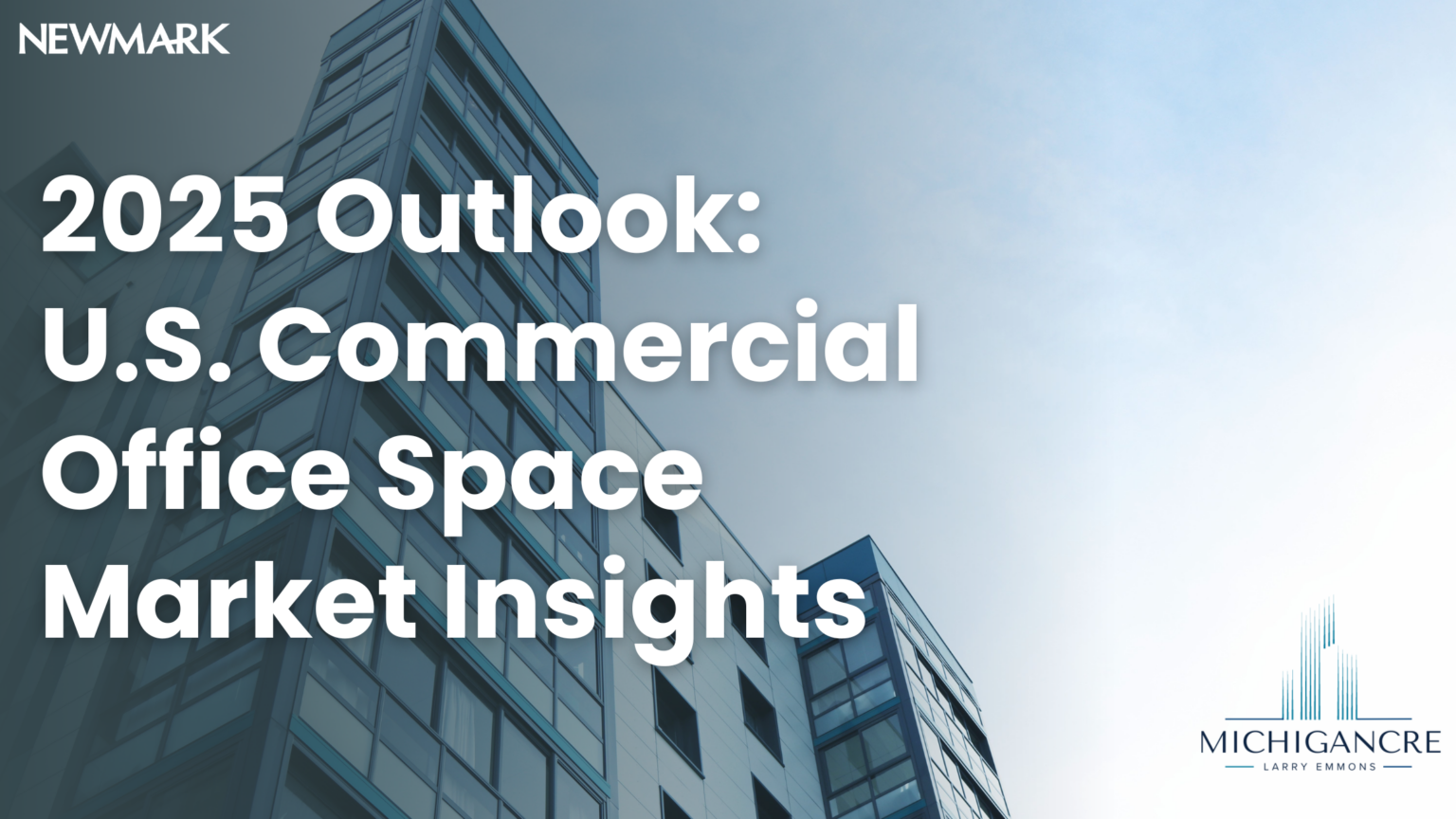The commercial office space market will continue to evolve in 2025, shaped by hybrid work, downsizing, and a “flight-to-quality” mindset. According to Newmark’s Winning Office report, while overall demand for office space is still stabilizing, a select group of high-performing submarkets is thriving—and investors are paying attention.
Commercial Office Space Demand Is Shifting—But Not Disappearing
Hybrid work has become the norm. As of mid-2024, 80% of U.S. companies offered some form of remote work, and the average lease size dropped by 11% compared to pre-pandemic normsWinning_Office_Paper. With nearly 1.4 billion square feet of space set to expire between 2025 and 2027, tenants are rethinking how much space they need.
This change has widened the gap between thriving buildings and those struggling to attract tenants.
The Rise of Trophy and Quality-Driven Spaces
Newmark’s research highlights a clear winner in today’s market: trophy buildings in prime locations. These properties—defined by top-tier finishes, advanced systems, and premium amenities—have shown consistent leasing strength, even post-pandemic.
Across six leading submarkets like Back Bay (Boston), Park Avenue (Manhattan), and Uptown (Dallas), trophy building vacancy rates average just 10.5%, compared to 16.5% in general Class A space. These buildings attract a mix of finance, legal, media, and tech firms—providing tenant diversity that stabilizes performance during downturns.
Key Markets Outperforming in 2025
- Back Bay (Boston): Bain Capital, Arrowstreet, and Adage Capital renewed and expanded leases here, reinforcing its appeal.
- Park Avenue (Manhattan): Blackstone expanded to occupy over 1 million square feet.
- Uptown/Turtle Creek (Dallas): New trophy developments like 1919 Woodall Rodgers are drawing major tenants.
- West Loop (Chicago): Leasing activity remains strong, with tenants preferring newer spaces over legacy properties.
Emerging-Maturing Submarkets Are Surging
While mature markets anchor the industry, Newmark’s data also highlights “adolescent” submarkets—areas that have grown rapidly in the past decade. These include:
- Fulton Market (Chicago)
- Southwest (Las Vegas)
- Far West Side (Manhattan)
- UTC (San Diego)
- Irvine Spectrum (Orange County)
These 15 leading corridors contributed to 108.8% of net office occupancy growth despite only making up 8.5% of the total U.S. office inventory. In other words, they’re driving market momentum.
What It Means for Investors and Tenants
For Investors:
- Trophy assets in strong locations remain highly attractive.
- Private buyers are acquiring overleveraged buildings at discounts, repositioning them with competitive rents.
- Emerging submarkets offer long-term upside—but timing is key.
For Tenants:
- Hybrid-friendly layouts and top-tier amenities are now must-haves.
- Tenants are trading older space for better locations—even if that means less square footage.
- Lease flexibility and location convenience are top decision factors.
Conclusion
The commercial office space market is not in decline—it’s evolving. Tenants are redefining their needs, investors are targeting high-performing assets, and new submarkets are reshaping the CRE landscape.
To stay competitive in 2025 and beyond, understanding these trends—and acting on them—is crucial. As a seasoned commercial real estate broker with deep expertise in the office market, I can help you find the ideal space for your needs or investment goals. Let’s turn these market trends into your next successful deal!
Contact me now at 248-705-9115 or Larry.Emmons@nmrk.com to get started!
Curious about what your commercial property is worth in today’s market? Get a FREE, no-obligation property valuation from an experienced commercial real estate expert. Whether you’re selling, leasing, or just planning, knowing your property’s value is key to making informed decisions.


